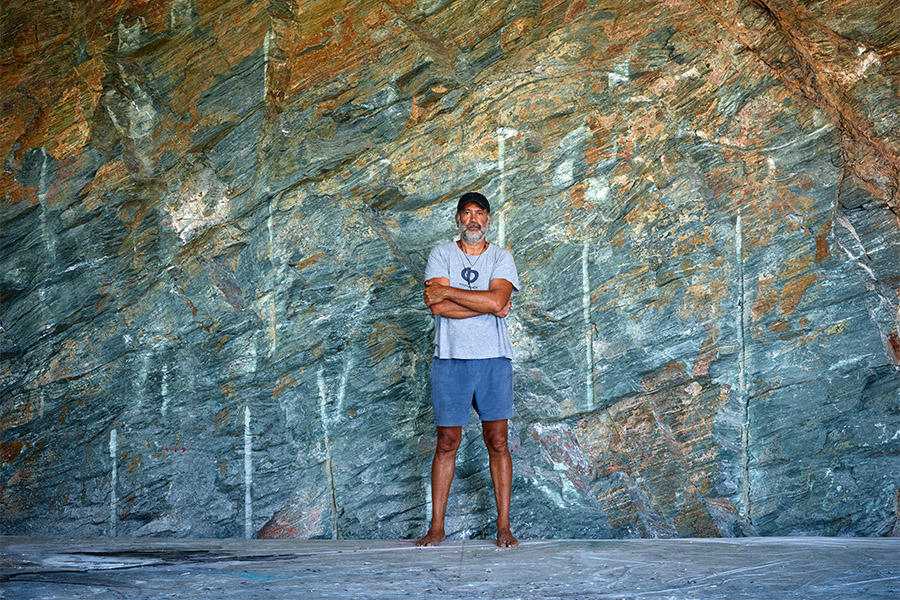Gavin Chetty, brand director at apartment rental company Way of Life, hones skills he developed as both a designer and a brand manager to produce thoughtfully designed, hospitality-inspired residential offerings. Here, Chetty describes his pivotal career moves, what he loves about his job, and why the hospitality industry is the most exciting place to be.
Where did you grow up? Did it influence your career path?
I grew up in Edinburgh, which has a lot to offer in terms of art, architecture, and design. The city center has a beautiful mix of contemporary and classical architecture, and, being quite small, these juxtapositions are especially noticeable. Spending time in the city influenced my appreciation for design at a young age.
What is your first design memory?
When my father relaunched his business. He invested heavily in a beautiful interior fit-out and in his branding—the results were impressive. I remember being fascinated by the architectural plans and the graphic designers’ sketches, which were then transformed into logos. The logos referenced the local neighborhood of the projects at the time, which I thought was genius. Even as a child, I have vivid memories of the millwork, construction happening on site, and seeing how all the different specialisms worked together to create the end product.

The Gessner is situated within the former Berol Yard Pencil Factory in Tottenham Hale, London
Give us a bit of your background.
I studied as a product design engineer at Brunel University London, as well as taking a year out to study typography at San Francisco State University. Following a string of internships and working for a number of interior design and branding agencies, I was appointed brand manager for Martin Brudnizki, which was a huge learning curve. A lot of things I learned while working under his mentorship have stuck with me throughout my career. I learned how to design hospitality spaces that are both operational and elegant at the same time. Designing a restaurant is one of the hardest things to get right—they must be functional and beautiful. You have about a two-hour window to impress someone during a restaurant experience. If you can learn the nuances of designing a restaurant, you can apply this to a lot of projects. During my time with Martin Brudnizki, I was lucky enough to work across a range of the most socially influential restaurants and hotel projects in the business, from 5 Beekman Street in New York, where I worked on the initial concept and pitch, to 34 Mayfair in London, where I created the restaurant’s graphic design identity and signage.
When did you join Way of Life?
I joined Way of Life over three years ago, predominantly because I was inspired by the cofounders’ vision to disrupt the UK’s rental sector. With my previous roles in design, branding, and creating highly successful hospitality spaces, I saw this as an opportunity to apply my experience in hospitality design and bring something new to the rental sector.

The communal dining area at the Gessner
What’s your favorite part of the job?
Managing my team is the most rewarding thing I do. I’m hugely grateful to have such a highly talented, multidisciplinary team working with me. The most important part of my job, and a highlight for me, is nurturing a culture of creativity and innovation for them to thrive. In my experience, if you can shape a supportive, creative environment where your team can work together smoothly, you get the best results. A great culture creates a great product.
What architect or designer do you admire most?
Stephanie Barba Mendoza. I recently went to her exhibition at Chelsea Harbour in London and admire the way she celebrates color and pattern within her projects, while juxtaposing contemporary and classic design. There’s a real sense of fantasy to her work. She’s one to watch within the industry in my opinion.
What do you love most about the hospitality industry?
The spectrum of people you meet and work with across the industry. In the hospitality business, everyone is important and everyone is responsible for delivering a part of the experience. Encountering all sorts of interesting people keeps you humble. In my opinion, it’s what makes the hospitality industry the most exciting place to be. It’s also quite rewarding working on projects where people can go and experience firsthand what you’ve created.

A studio apartment at the Gessner
What is your dream project?
I’d love to work on a luxury project in a remote location. Working on a city hotel, your focus is very much on how the hotel interacts with its existing surroundings, whereas projects further afield—like resorts or branded residences—allow you to curate the experience for visitors from start to finish. If there’s nothing built around the location, you have to create a whole world for guests. It would be a very different brief to anything I’ve worked on, and it certainly gets my imagination going.
What’s next for Way of Life?
Our most recent project, the Gessner, is Way of Life’s new, elevated, hospitality-inspired residential offering that recently launched in Tottenham Hale, London. It’s inspired by a contemporary members club, and our objective was to elevate the experience for residents and give them a real sense of belonging. The design places an emphasis on natural materials, luxurious finishes, and carefully selected furniture of the highest quality. We also appointed Fettle to design the two guest suites.
We’re currently working on three new buildings in East London. We’re working with multiple established and exciting artists and designers across the different buildings. In addition, an integral part of our brand approach has been planning a series of hyperlocal community initiatives, which aim to tie these buildings into the communities, an aspect I believe makes Way of Life different as a property company.
If you weren’t in your current career, what would you be doing?
Probably running a boutique hotel with good surf and great food!
More from HD:
Members Clubs Are Making a Resurgence
Ace Hotel Toronto Warmly Embraces Its Location
10 New Hotels Bolstering Australia’s Rebound


